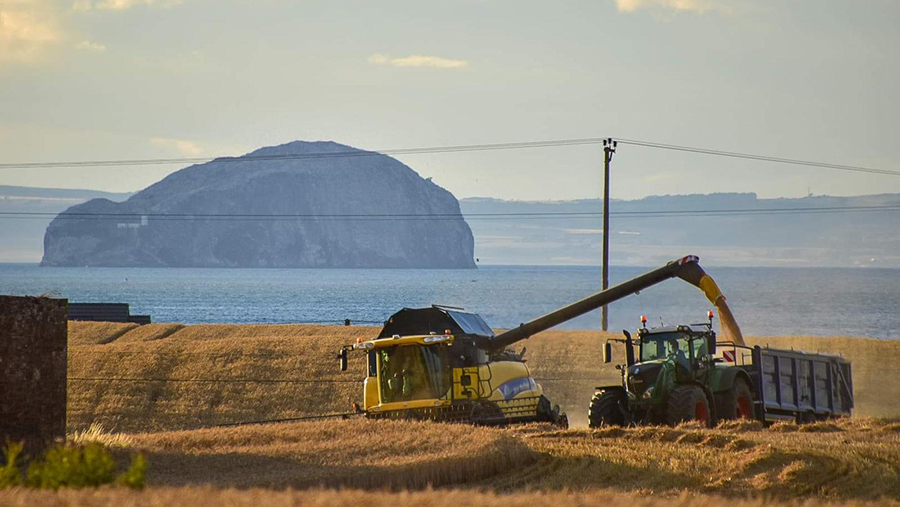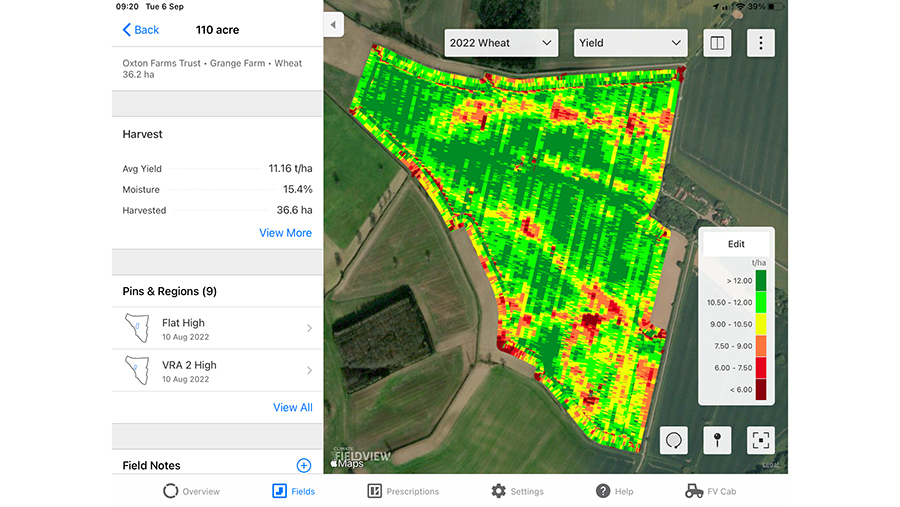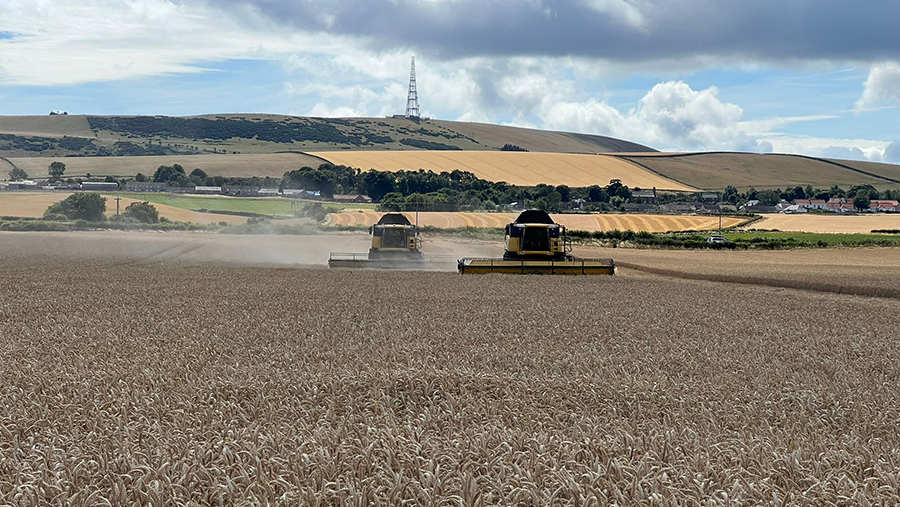Advertiser content
How FieldView’s real-time data can help farmers this harvest
Provided by
At Bayer Crop Science, we’re committed to supporting farmers on their journey, putting health, nutrition and sustainable food production at the very heart of what we do. As the UK’s leading agricultural innovators across seeds, crop protection products and services, we want to help shape the future of farming in a way that benefits everyone.
There’s no busier time on the farming calendar than harvest, so being able to make instant decisions on grain storage and marketing options can be hugely beneficial.
And that is exactly what some farmers will be doing this season thanks to the real-time data access via FieldView, Bayer’s digital platform.
It provides instant data on field progress but also, more importantly, yield and moisture levels while harvest is in progress.
And, you don’t have to be in the combine to see it. Indeed, Richard Cross of the Oxton Estate, Southwell, Notts, watched harvest progress while holidaying in the Isle of Lewis last summer.

© Bayer Crop Science UK Ltd
For David Hoyles and Henry Richardson of G H Hoyles Ltd, Long Sutton, Lincolnshire, they note harvest is a pressured time and that efficiency and safety are paramount.
Harvest efficiency isn’t the key reason they signed up for FieldView but it certainly helps. They have used the platform to make quick decisions on storage options.
A key benefit is they can do this without having to trouble the combine operator.
“We can see everything with a phone. It gives us an estimate of finishing time, allowing us to get the escort vehicle in place promptly.
“More importantly, we can also see live yield and moisture data, allowing us to make instant decisions on where to store grain and any wheat we might want to sell if storage is getting tight,” says Henry.
It also helps the rest of the G H Hoyles team. As soon as the combine enters a field variety, data populates the screen, so if a storage decision has been made the team don’t need to trouble David or Henry.
They believe FieldView probably saves them 10 to 15 hours per season from not having to mess about with memory sticks in the combine.
“You know all the data is safely backed up automatically,” adds Henry.
FieldView also offers the option to set up automatic daily email reports showing progress of harvest each day, as well as text alerts any time moisture levels go above a set level.
It’s a management aid to help us work smarter, says David. “It gives us more information to make decisions from.”

© Bayer Crop Science UK Ltd
Oxton Estate manager Richard Cross agrees and he realised the benefit of real-time data and remote-viewing functionality while on holiday last year
He logged in and was a little surprised to see the combine in a field of rape.
It illustrates the usefulness of real-time data, as he realised it would assist with harvest planning when back from his holiday.
“Knowing combine progress through a field, crop yield and moisture is so useful.
“We can get everything in place to get grain back to the yard and in the right shed, or in readiness to move to the next field.
“Harvest is a pressured point but it helps us be that little bit more efficient,” he notes.
What he likes about FieldView is the access to usable data. “We all have data, it is making good use of it that is important,” he adds.
His goal is to get every hectare of winter wheat achieving 10t/ha and FieldView is helping him evaluate a number of farm nutrition trials.
Field yield results are being overlayed with as applied data from the fertiliser spreader.
He believes a slight reduction in total nitrogen (N) is possible, varying rates to match crop biomass based on vegetative data captured using FieldView satellite imagery.
Feed wheats typically get 220kg/N/ha and milling wheats a 20kg/N/ha top up.
For the trial, the standard dose was reduced to 200kg/N/ha with a further variation of plus or minus 20 based on low or high biomass.
It is one season, and more data is needed before any conclusions can be drawn, but through a combination of improved yield and reduced inputs, the trial field delivered a £105.86/ha margin improvement.
Had he achieved a similar result across his wheat area, that equates to an extra £35,887.

© Bayer Crop Science UK Ltd
If you can make instant decisions on harvest, you can also make quick decisions on varieties for the next season.
That is one reason why Cloud Farming director Chris Leslie fitted his combines with the retrofit FieldView Yield Kit, an aftersales option that allows yield mapping to be fitted any combine.
It gives Chris and his team access to detailed field performance and automated data transfer to the cloud, saving hassle with memory sticks and minimising time.
His view is that anything that saves you time is worthwhile, and if it also gives you better agronomic insight that is even better.
The company provides farm management and contract services for farming clients from East Lothian to Tayside.
This is where FieldView really comes into its own in his view – the ability to evaluate any crop decision, whether it be the variety itself or how it is managed.
This shouldn’t be seen as something Orwellian and Chris says real-time data offers genuine benefits.
“When we’re combining, our customers can log in to see field progress, yield and moisture. It’s valuable data to help with storage and marketing decisions.
“Also, it offers insight into varietal performance. In the past, by the time you’d got the data together, it was too late for the following season,” he concludes.
